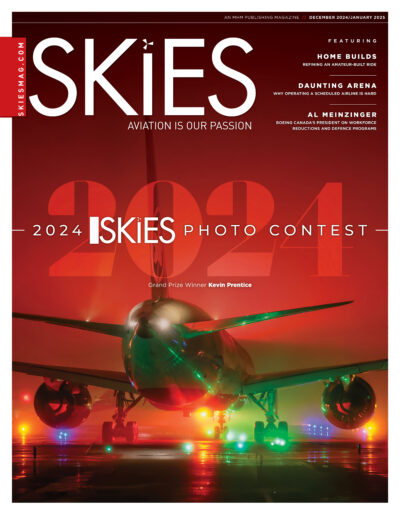The Air Line Pilots Association of Canada (ALPA) and the Canadian Air Traffic Control Association (CATCA) have unveiled a comprehensive white paper, Charting a Path for the Future of Canadian Aviation.
Representing over 15,000 highly skilled workers in Canada’s air sector, ALPA and CATCA outline actionable recommendations to ensure a safe, resilient, and pro-worker aviation system, a system that has been plagued by deregulation, underinvestment, the COVID-19 pandemic, and above all, a lack of a coherent and collaborative vision for the future.
“The COVID-19 pandemic revealed significant deficiencies in the Canadian aviation system and exposed the fragility of our current industry and the foundational elements it relies upon,” said Capt Tim Perry, president of ALPA.
“Workers across the sector feel more pressure than ever before to deliver, while airlines and industry are asking to claw back regulatory protections for workers. We must not allow the sector to hide behind the shadow of the pandemic as they demand the rollback of important protections for workers.”
Marking 40 years since the deregulation of Canada’s aviation sector, the white paper takes a sobering look at the current state of the industry. While there has been some noteworthy progress in safety and labour protections, significant issues continue to go unaddressed, including ageing infrastructure, a highly critical audit by the International Civil Aviation Organization, and a lack of investment in worker training and regional connectivity.
While aviation is critical to the movement of people, it is also critical to the movement of goods and Canada’s role as a trading nation and for the resupply of communities that rely on air transportation.
These gaps are crippling the system, and putting jobs, growth, and the services Canadians deserve, at risk. The aviation sector is not ready for the future, and the lack of resiliency will mean we cannot adapt to the changing aviation landscape.
“Air traffic controllers work around the clock to keep Canadians safe across some of the largest airspace in the world, but they’re being stretched to their limits. Our country deserves a well-staffed, well trained, and well rested aviation workforce. This isn’t just about industry profits—it’s about creating a system that works for everyone, from passengers to frontline workers to remote communities that depend on aviation access,” said Nick von Schoenberg, president of CATCA.
Key recommendations in the white paper include:
- Developing a National Aviation Strategy to address infrastructure underinvestment, climate change resilience, and regulatory modernization.
- Enshrining the belief that preventative action to improve safety is more cost effective than responding after an accident occurs.
- Protecting and expanding worker safety regulations to prevent a rollback and promote the expansion of protections like fatigue rules.
- Investing in training and recruitment to address chronic labour shortages, particularly in underserved rural and Indigenous communities, as well as ensuring recurring training for air traffic controllers.
- Enhancing affordability and accountability in aviation and ensuring that passenger rights and fair treatment for workers are central priorities, while keeping safety as a central focus of any change.
- The creation of a Collaborative Air Safety Forum that includes aviation sector workers, industry, and government, so that all decisions and regulatory proposals that impact or improve safety are made with those who must implement new policies on the ground.
- Creating standards for recurring and modernized training, as technology evolves, for air traffic controllers and parts of the transportation system, leveraging worker knowledge to address gaps, defining a process for the introduction of new technology and equipment, and providing operational input.
Quick Facts:
- Canada’s aviation sector contributes three percent of the national GDP and supports 250,000 direct jobs.
- Canada is facing declining global rankings, with a 2023 ICAO audit scoring Canada at 65.1 percent, down from a top-10 ranking in 2005.
- Fatigue remains a critical safety issue, with air traffic controllers still lacking a comprehensive workload management system, recurrent training, staffing standards to meet minimum service requirements, and pilots seeing inadequate regulatory oversight leading to increased fatigue.
- Regional and rural connectivity is at risk as airlines prioritize international routes, leaving many smaller communities underserved.
- Pressure to alleviate significant staffing shortages is increasing because of the high cost of entry into the aviation sector, from expensive training for pilots to the high cost of living where training and jobs are concentrated.
- Investments in infrastructure and climate resilience are urgently needed to modernize ageing airports and air traffic systems.
- The white paper emphasizes collaboration among industry, government, and workers to ensure a secure and innovative future for Canadian aviation. ALPA and CATCA call on policymakers and stakeholders to act now to implement these recommendations.
This press release was prepared and distributed by the Airline Pilots Association, International.

